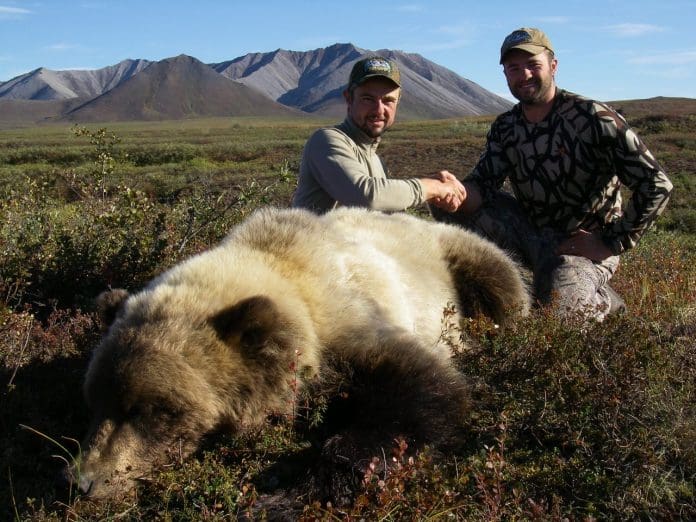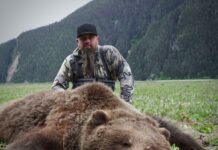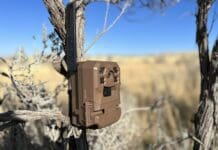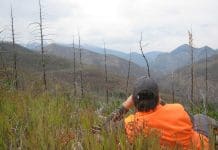Judging Brown and Grizzly Bears
By Billy Molls
There is perhaps no other animal that is more difficult to judge than a brown or a grizzly bear. Actually, these two bears are really one-in-the-same. An Alaskan grizzly is nothing more than a brown bear that lives North of the 62nd parallel. There is some deviation from this boundary, but for the most part brown bear live near the coast and grizzlies live in the interior.
There are many reasons why a brown bear can get to be twice the size of an interior grizzly, but it is mostly due the diet of the bears. A brown bear’s primary diet during the summer months is salmon. Salmon are extremely plentiful in most areas along the coast and contain very high levels of fat, oil, protein, and other nutrients. During the peak of the salmon spawns, a brown bear would likely let a moose walk right by and never even consider trying to kill it, as it would require a lot of effort to do so. Even then, the moose can’t offer the bear the nutritional value that the thousands of salmon in the rivers can. Conversely, an interior grizzly rarely, if ever, sees a salmon. Thus almost any plant or living organism that has any nutritional value is considered food. They will eat willow buds, berries, roots, ground squirrels, moose, caribou, fish, humans, and anything else they are lucky enough to encounter. Their opportunistic existence is the main contributing factor to their nasty reputation.
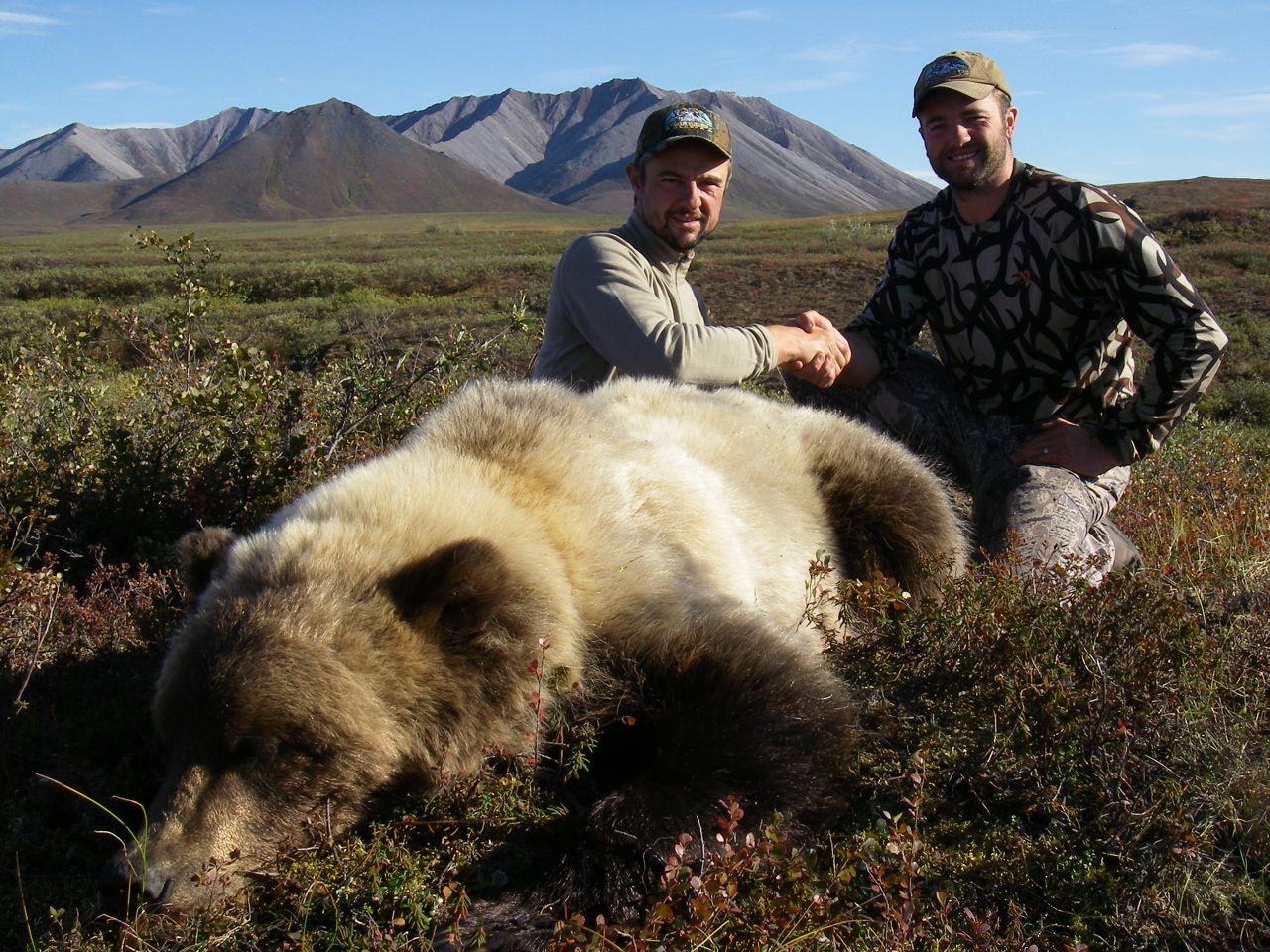
This is a seven foot sow grizzly from the Arctic. Notice the tapered nose and light color.
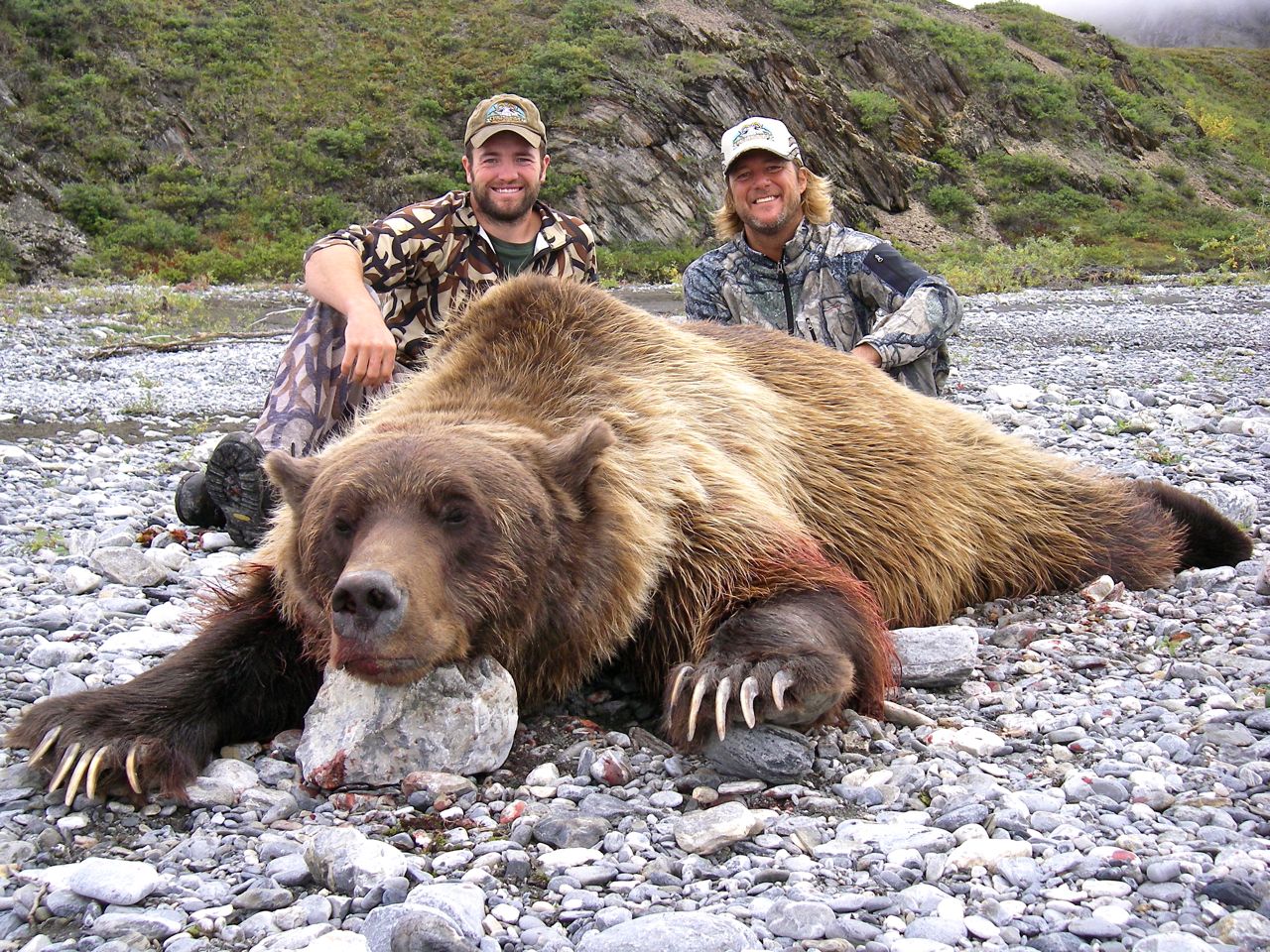
This is an 8’3″ B & C grizzly boar also taken from the Arctic.
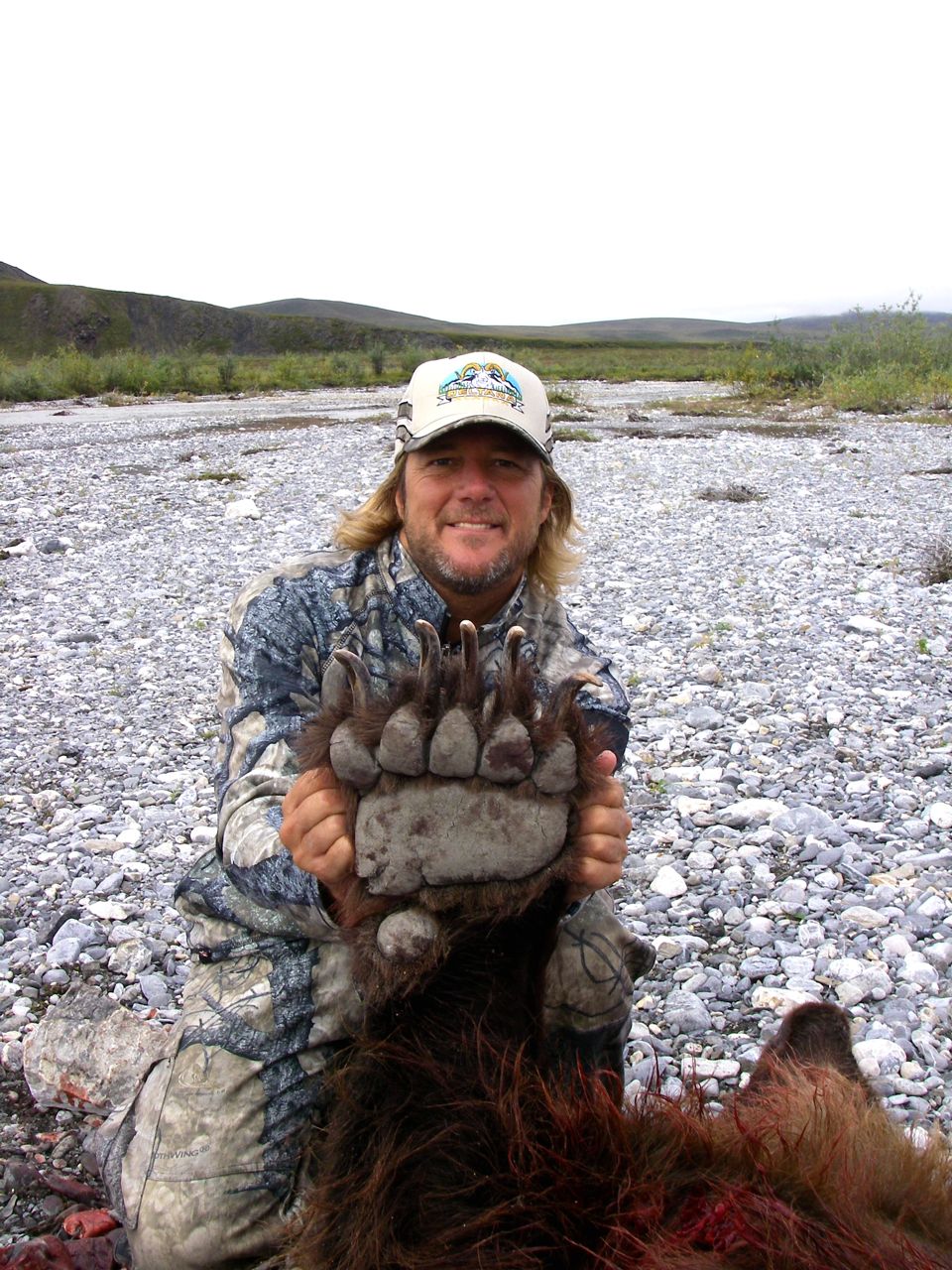 The coastal areas where the browns live are also much more temperate. The interior can reach -80 degrees, where as the average low in January in Kodiak Alaska is well above 20 degrees F. Therefore, brown bears are often able to find food for more months out of the year, and generally hibernate for shorter periods of time, thus having more time to grow.
The coastal areas where the browns live are also much more temperate. The interior can reach -80 degrees, where as the average low in January in Kodiak Alaska is well above 20 degrees F. Therefore, brown bears are often able to find food for more months out of the year, and generally hibernate for shorter periods of time, thus having more time to grow.
I would estimate that in the fall season of the year, a truly giant brown bear from Kodiak Island, or the Alaska Peninsula, where the bears are generally the largest, might exceed 1,600 pounds. There is a full-body mount in the Anchorage airport of a Kodiak bear that supposedly weighed 2,200 pounds. This spring, I intend to pack a scale with me to butcher and weigh a bear or two, in order to get a realistic idea of how much a bear truly weighs. In some northern and central parts of the state, I don’t think there is any chance of a grizzly getting anywhere near half the body weight of the biggest of brown bears.
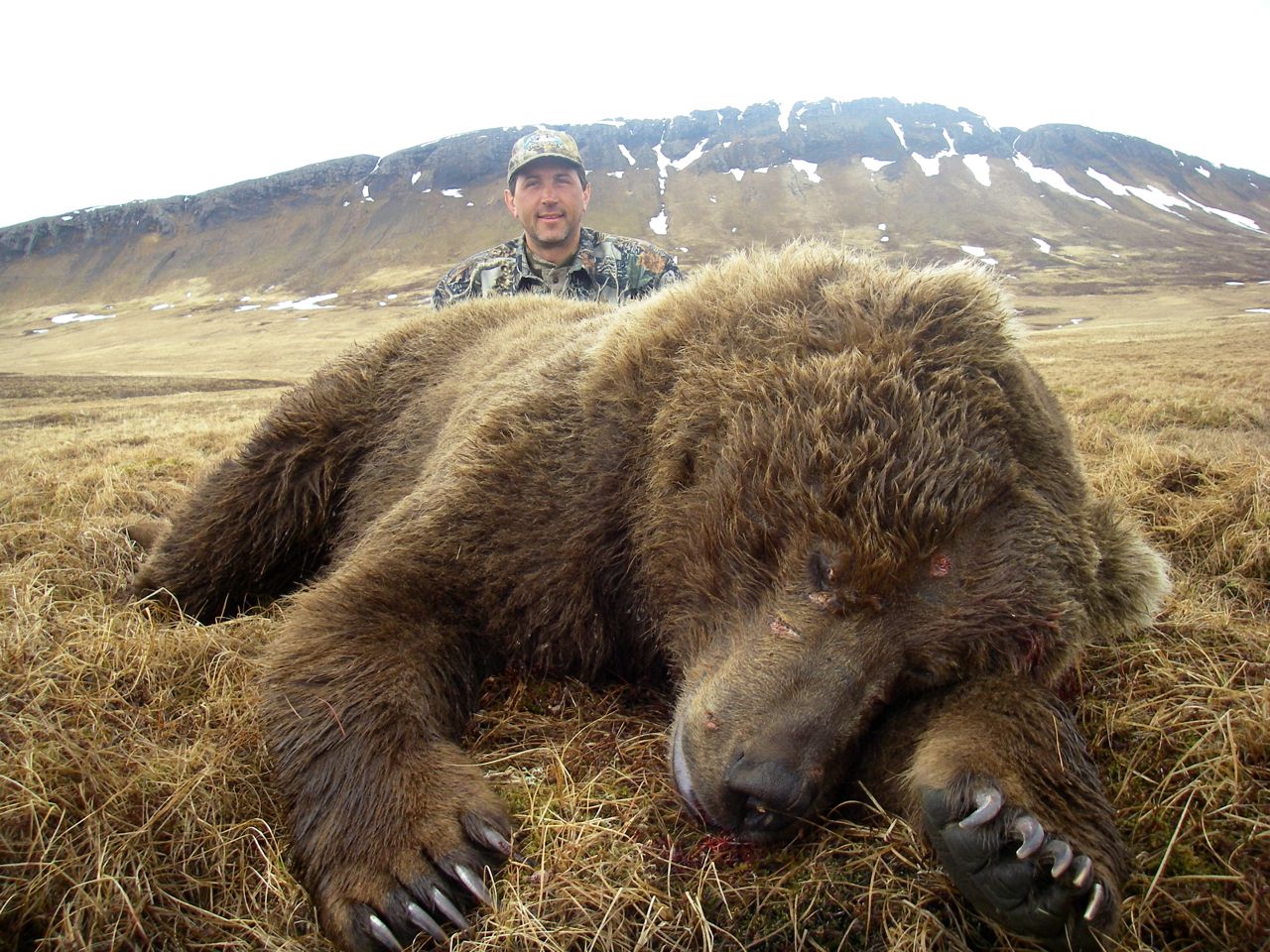
This is a 10’2″ spring boar. Notice the dark hide and scars on his face.
He was most likely fighting a sow to kill her cubs and breed her.
A big boar can be close to double the size of a big sow. So for the sake of argument, let’s use the coastal brown bear for an example. A giant old sow can square a little over nine feet. A king-sized boar can square 11 feet (boars are in their prime from 12-15 years old and rarely get much over 20 years of age, while sows can reach over 30). The square of the bear is measured when the raw hide is skinned into “rug” form, and you measure, without stretching, from nose to tail, and then from front claw tip to the other front claw tip, add the two measurements together, and divide by two. It is basically just an average of the two measurements. A 10 foot brownie will roughly measure 11 foot, claw to claw and nine foot, nose to tail. But as one of the premiere brown bear outfitters in the game once told me, “Bears aren’t square, they’re cubed.” His point being that an 11 foot bear isn’t 22% larger than a nine footer, as the squared measurement would indicate. An 11 foot bear would be closer to double size (body mass), like the cubed measurement would reveal.
With that being said, the first order of business when judging bears, is determining whether it is a boar or a sow. Often you are doing this from several miles away through a spotting scope. Again, I have worked for one of the best bear guides on Kodiak, and have learned a lot from him and his guides over the years. For example, if its neck is short, its head slopes gradually into its nose, its hind end is big in proportion to the rest of its body, its front shoulders are thin and short on muscle and bone structure, or if its light colored, then you are likely looking at a sow, and can be sure that it probably won’t square over nine feet. My advice then is to look away and find another bear.
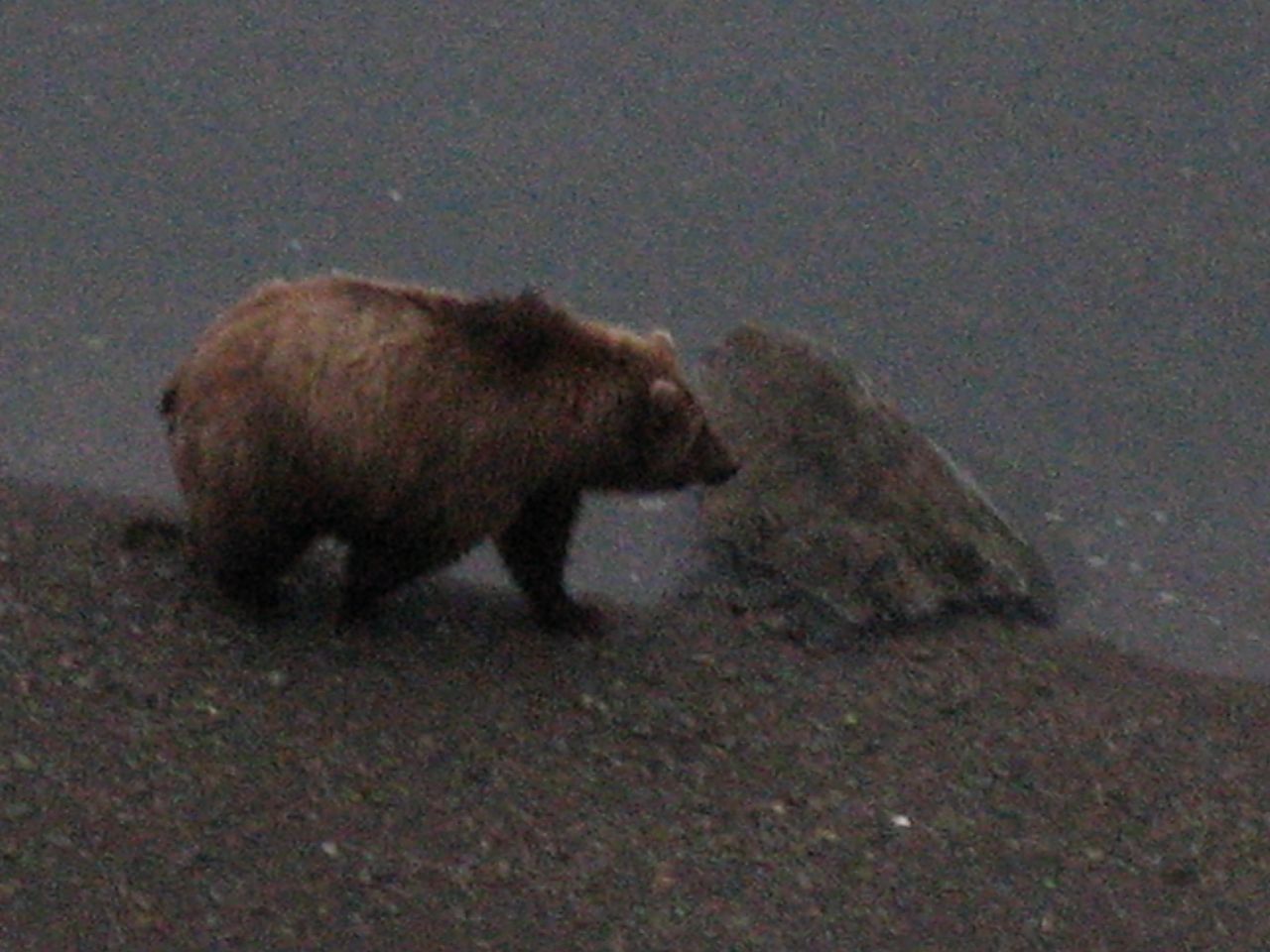
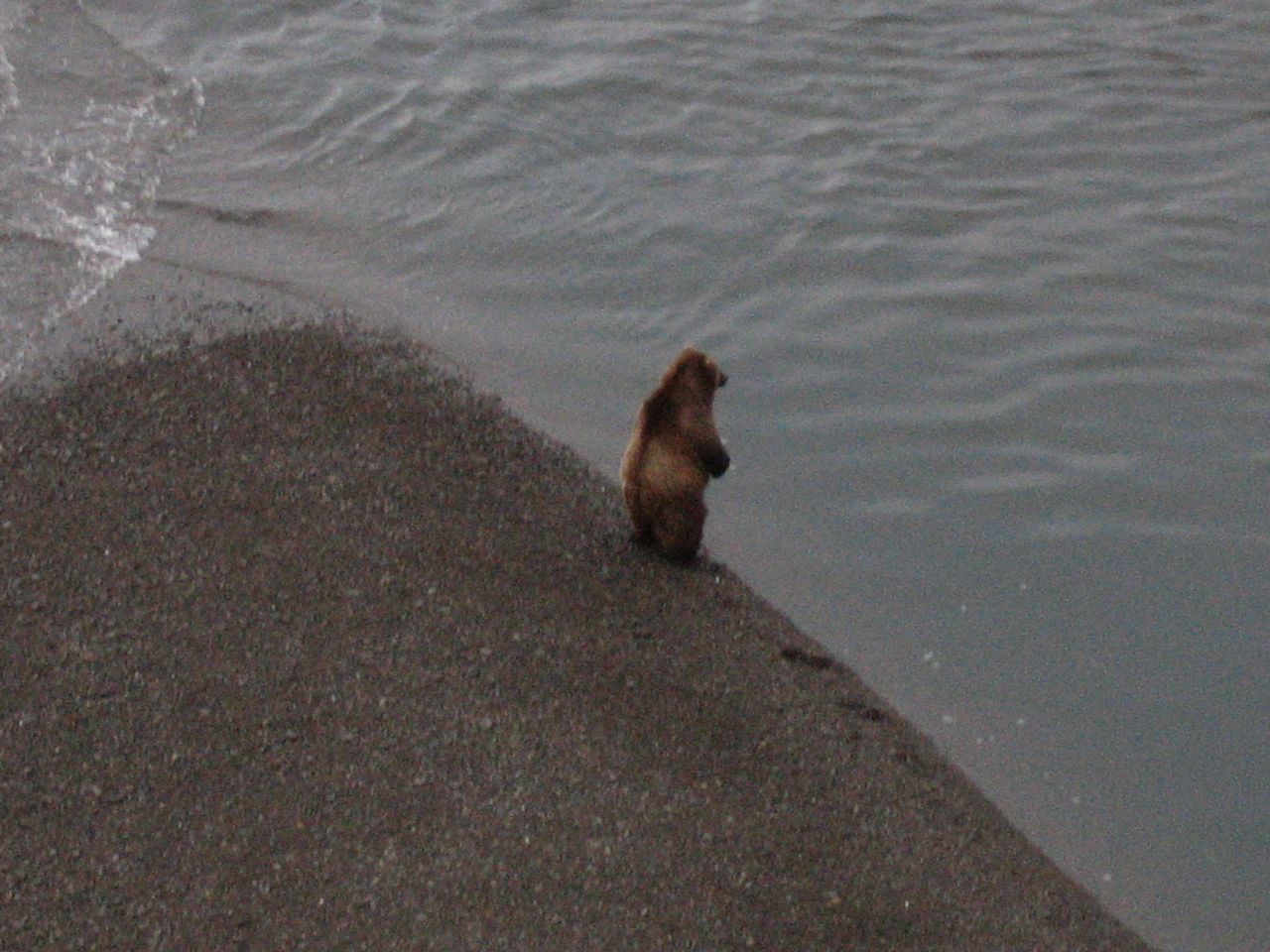
This is a 7’5″ or 8 foot middle aged sow from the peninsula. Notice the short neck,
big butt, light two toned coloring, sloped nose and head, and very thin wrists.
What if the next bear you see is dark, has very long front legs, a long neck, and a long, square, pronounced nose? You are now most likely looking at a boar. If he walks quickly and appears long and lanky, especially in the front legs, then he is likely fairly young and will square between eight and nine foot; he is the equivalent of a teenage boy. When you find a boar that swings the trunk of his body to get his front legs in front of him, because he is so massive in the chest and shoulders that he can no longer simply swing them straight forward, study that bear some more (often times you can actually see the penis sheath of a boar if you studying it long enough.) His front paws will be pigeon-toed from his muscularity, and you should be able to easily see that in his stride, even from miles away. He will have no identifiable wrists and his legs will not taper to his paws. If his head looks very small, and you can visualize at least five of his head lengths from the nose to tail, and you can easily imagine over a dozen silhouettes of his head fitting into his body, now you’ve got a 10 foot boar. Throw on your pack and go get him. Another sign of a big bear is when you first look at the animal and all you think is, “That looks like a tank!” Like any critter, if you think it’s big, it’s probably not, but if you know it’s big, then it probably is.
So these same criteria can also be used in any areas of the state. When you are judging a bear, you have to have some idea of how big the bears in the area get. In many areas of the interior any grizzly over eight foot square is considered very big. Along the coast an eight footer is considered very small, and is probably only five or six years old. That being said, these bears will look drastically different when you see them, because of their age, and bodily proportions. When I hunt grizzlies in the Arctic, I use the exact same method; only I figure that a giant old boar is going to be lucky to ever reach 8 ½ feet, and a giant sow would rarely stretch much over seven feet. So I observe the mannerisms and characteristics of the bear, determine the sex, then the age or maturity of the bear, and base my size judgment down from those baseline numbers.
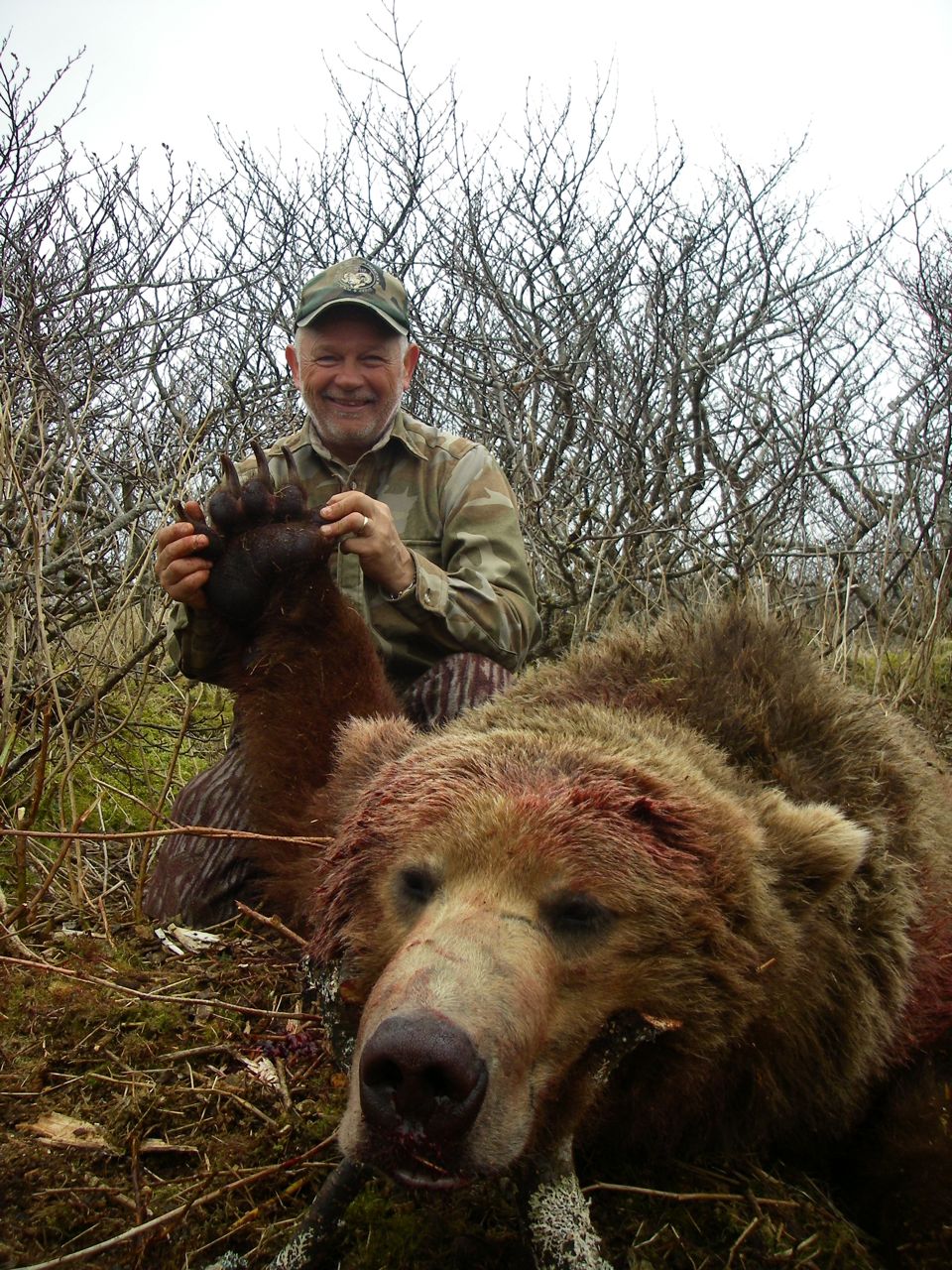
This is a 9’1″ spring boar. Notice his long, straight, square nose.
He isn’t quite as filled out or as muscular as the other spring boar.
Telling someone how to judge bears is much like telling them how to drive a car. You can offer advice, but in the end, experience and practice are ultimately the only way to get good at it. An entire book could be written on the subject of judging bears, and half the people who read it would be disappointed in the next bear they shot. No two bears are alike, and very few will meet all the criteria. So the more characteristics that you know to look for, the more accurate your estimation will be. Even though, judging bears isn’t an exact science, a good guide in Alaska is going to be right better than 90% of the time. The guide that says he is 100%, likely hasn’t been guiding very long.














